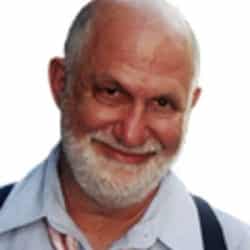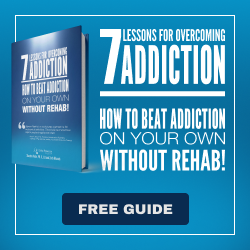Super Bowl Special: Britt Reid and Addiction Treatment Mythology
How are we doing at solving our alcohol and drug problems?
A dark event has occurred to cloud the Super Bowl. Kansas City Chiefs head coach Andy Reid’s son Britt, the Chief’s outside linebackers coach, ran into the back of two cars parked along a road shoulder Thursday, very seriously injuring a small child. He had been drinking. There is a possibility this will overshadow (or undermine) the Chiefs’, and their Superman quarterback Patrick Mahomes’, on-field performance in the Super Bowl.
If it did, it would repeat some famous previous Super Bowl incidents.
In 1988 Cincinnati Bengals running back Stanley Wilson went on a cocaine binge the night before the game and wasn’t able to play. Aside from losing his contributions in the game, the disappointment and frustration the other players felt had to have hurt his team’s performance. The Bengals’ lost 20-16 to the San Francisco 49ers.
In 2003 the Oakland Raiders’ Star center Barrett Robbins went on a week-long binge in Mexico and showed up disoriented the night before the Super Bowl, when he couldn’t play against the Tampa Bay Buccaneers. This was the last time the Bucs appeared in the Super Bowl before this year. They shmiced the Raiders, 48-21.
None of these is a happy story. Does their periodic (one might say perpetual) reappearance suggest anything? Like that we have made no progress in dealing with addiction, alcoholism, and substance problems over the decades?
In the meantime, there have been many points since I’ve been involved in the addiction field that cures/solutions for drug and addiction problems have been heralded. Let’s review these.
The Raiders’ Robbins subsequently went to the Betty Ford Center, and did play again. You remember when people felt that the BFC would solve all our addiction problems? We might be less optimistic today. As for Robbins, his life has been an unhappy story of substance and mental health problems.
The Bengals’ Wilson had had drug run-ins prior to his SB cocaine meltdown, and had been treated. Do you remember in 1981 John and Mackenzie Phillips appeared on the cover of People Magazine? They were touting the great new drug cure, Clonidine, that they were administered by renown addiction doctor, Mark Gold, at Fair Oaks Hospital in Summit, New Jersey.
Fair Oaks was part of a chain of hospitals, psychiatric Institutes of America, which were prosecuted for widespread fraud. Here I describe the fate of the hospital chain, along with the Phillips’s spotty histories after that cover story. Things haven’t gone well for Mackenzie, and John was up and down before dying of a heart attack, age 65, in 2001.
Earlier than this, in the late 1970s and the 1980s, neuroscience — led by Richard Restak and his best sellers and PBS specials The Brain and The Mind — promised cures for mental illness and addiction. I debunked these theories as they appeared, starting in the late 1970s.
Let’s flash forward fifty years to see how things are going. In 2021 the CDC has announced new record rates of drug deaths, now over 80,000 annually. Meanwhile, according to the World Health Organization, the US lost 1,703 days of life per 100K population from all forms of drug use, the second-highest rate of drug-use disease burden in the world. This compares with 350 DALYs per 100K in Europe, roughly one-fifth of the US rate. These are due not only to Fentanyl and synthetic opioids, but include record levels of cocaine, heroin, methamphetamine, and benzodiazepine deaths. Such deaths occur now at a rate roughly 400 percent higher annually than they did in the US at the turn of the 21st century.
Perhaps we aren’t treating people enough. In order to remedy that shortfall, we are now forcing more and more people into drug and addiction treatment through court and other programs. I have been fighting this coercion for decades. But coercion is an essential component of modern American treatment, and is now touted and supported by drug policy reform advocates as described in the Rolling Stone headline, “Drug Decriminalization* Goes Into Effect in Oregon: Measure 110 prioritizes drug treatment over police enforcement, using cannabis revenue to open new addiction treatment centers across the state.” (*Law enforcement channeling people into treatment is not decriminalization.)
Let’s return to the story of Britt Reid for the final nail in this societal coffin. Reid has had previous DUIs covering decades, for which he was “treated.” Indeed, there is a new thrust to put people with DUI’s into treatment based on Ken Blum’s bogus commercial genetic tests. We are going backwards rapidly.
Allow me to summarize:
- After nearly a half century of biomedical theorizing and proposed addiction-disease treatments, we are doing as badly as ever — worse — in dealing with drugs and alcohol.
- This represents a society-wide, self-destructive belief that we can improve mental health and substance use while bypassing ordinary societal mechanisms and human experience.
- Nothing daunted, when confronted with our decisive failures, even drug reformers are simply doubling back on addiction disease myths and treatment.
In reality, we are hurling rapidly backwards, as our Super Bowl stories reveal.







Great read. We spoke a couple years back. If you’re ever in North Central Illinois, I know a Italian place with good eggplant Parmesan. Would love to reconnect.